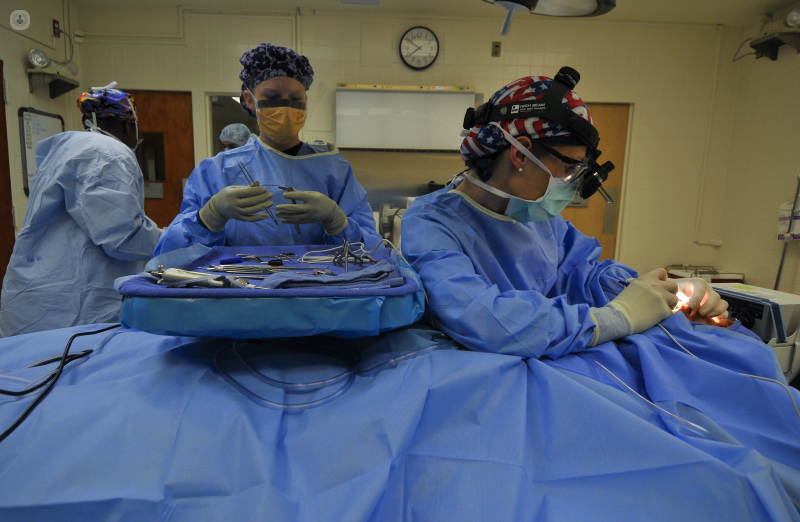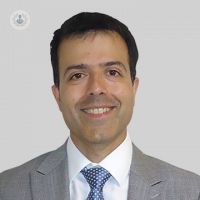Septorhinoplasty: why have a nose job and what to expect
Autore:Surgery may be done on the nose for a number of reasons. Perhaps the individual isn’t happy with the appearance of their nose and their motivation is purely cosmetic; other times they can’t breathe properly, so they opt for surgery for functional reasons. On some occasions, the surgery may be a combination of the two. Distinguished ENT surgeon Mr Paul Chatrath is here to explain septorhinoplasty.
What does a septorhinoplasty consist of?
A septorhinoplasty is an operation which is performed both to improve breathing through the nose (septoplasty) and the cosmetic appearances of the nose (rhinoplasty) in one procedure.
The septum is the central structure inside the nose that divides the nostrils. It is made of cartilage (soft) and bone (hard). It is usually straight, but in many cases it is deviated to one side, causing the nose to be blocked. If corrected, the nasal airway can then improve.
The cosmetic appearance of the nose can be affected by many different factors - sometimes it is the nasal tip that is misshapen, or the top part of the nose may not be straight, or there may be a bump or prominence on the back of the nose. Whatever the reason, a septorhinoplasty can address all of these issues.
Why would someone have the septorhinoplasty treatment?
A septorhinoplasty is recommended if you are having difficulty breathing through your nose due to a deviated nasal septum, and also if you are not happy with the external shape of your nose. Undertaking both at the same time makes sense because it involves only one operation rather than doing the septoplasty on one occasion and the rhinoplasty on another. Also, it is often the case that the septal deviation and change in shape of the nose have been caused by an episode of trauma or an accident, and correcting both at the same time makes sense to achieve the best possible result. Sometimes, the septal deviation can be so severe that correcting it alone can change the appearance of the nose, so undertaking both the functional (breathing) and cosmetic aspects together is often essential.
Can anybody have septorhinoplasty surgery?
I recommend only people over the age of 16 undertake septorhinoplasty as it is important to wait until the nose is fully grown and developed before considering any changes to the appearance or structure. Over this age, there are generally no restrictions as long as you are medically fit for the procedure and for anaesthetic.
It is important to take time to be sure that this surgery is right for you – your surgeon will guide you through the process and part of this will involve understanding what your aims are with regard to the shape of the nose. Your expectations are crucial in this process and your surgeon will be able to advise you if they are realistic and whether the proposed surgery can deliver the changes (both functional and cosmetic) that you are hoping for. In this regard, consulting with an ENT surgeon with an interest in rhinoplasty and facial plastic surgery is essential in order to be able to correct both the breathing and cosmetic requirements. Also, changing the shape of the nose can sometimes lead to problems with nasal breathing, and an ENT surgeon will be able to address this.
Does the surgery leave scars?
Septorhinoplasty surgery can be undertaken via an open approach or through the inside of the nose. The open procedure involves placement of a small incision/cut at the base of the front part of the nose (columellar). In the vast majority of cases this heals extremely well. Whilst the scar will not be invisible, it is quite hard to see as it heals well and is in a location that is not too obvious.
In both an open and a closed (internal) septorhinoplasty approach, it is sometimes necessary to place one or two small pin prick incisions at the side of the nose if the nasal bones need to be repositioned as part of the surgery. These incisions are no bigger than the needle used for a routine blood test and as a result heal extremely well.
How long is the expected recovery time?
The surgery itself can take anything between 1-3 hours and can usually be undertaken as a day case, so you should be able to go home on the same day.
I advise a two week recovery period, during which you should not go into work (although if your job allows it you could work from home). You should also avoid crowded places such as restaurants or parties, owing to the risk of picking up an infection from someone else, and also avoid heavy lifting or exercise. After two weeks you can get back to normal activities, although I would still advise a further period of four weeks during which you should avoid contact sports. There is often quite dramatic bruising for 1-2 weeks, which tends to disappear quite quickly, although the nose will remain swollen for some weeks to follow.



